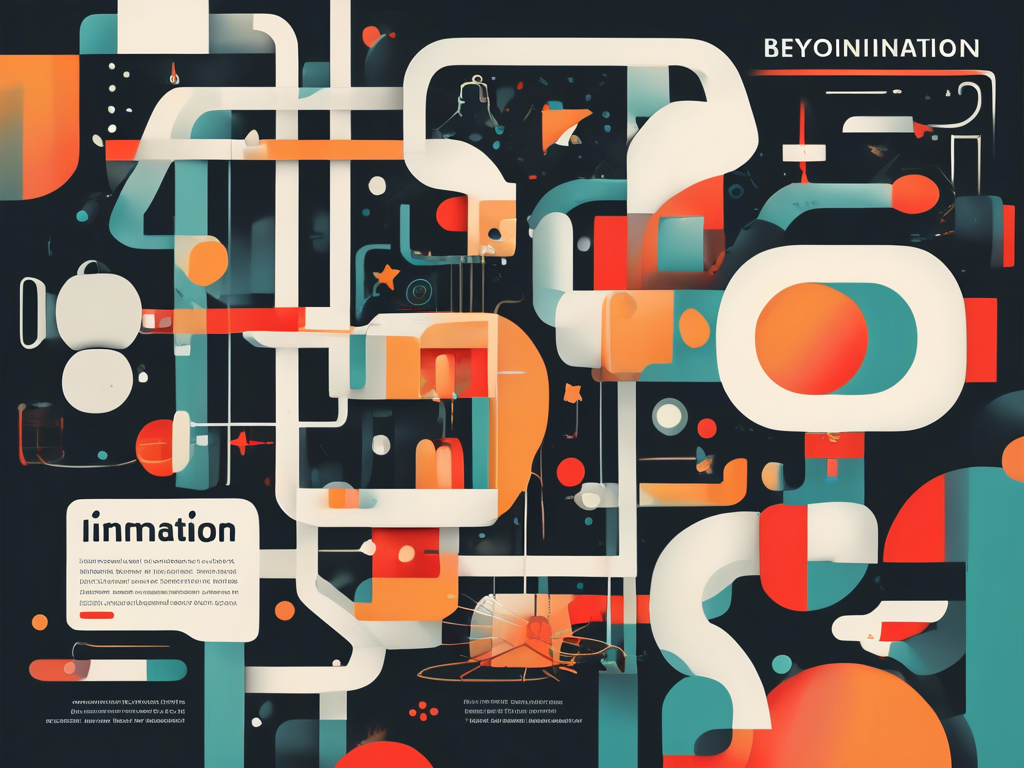In the whirlwind of technological evolution, artificial intelligence (AI) stands at the epicenter, continuously pushing the boundaries of what’s possible. As we Explore the Frontier, we encounter key AI innovations that are not just shaping, but fundamentally transforming our tech landscape. These advances extend their reach far beyond niche applications, becoming the very fabric of modern computing and connectivity.
AI Breakthroughs are more than mere incremental steps; they represent monumental leaps in how we process information, solve complex problems, and interact with the world around us. This rapid shift from Theory to Reality reflects the accelerated evolution of AI, as it swiftly moves from research labs into our daily lives, influencing every touchpoint of technology.
As we Navigate the Future, the role of AI in emerging technological trends becomes increasingly central, offering a glimpse into a world where innovation is relentless and unchartered territories beckon. The unseen impact of AI on our daily tech interactions is profound, often Beyond Imagination, redefining the user experience and altering our perceptions of what’s achievable. This article aims to delve deep into these transformative forces, providing a comprehensive look at how AI is heralding a new era in technology.
Innovations in AI and Their Impact on Technology

Advancements in Machine Learning Algorithms
Machine learning, a pivotal branch of Artificial Intelligence (AI), has seen tremendous progress over the past few years. The evolution of deep learning architectures, such as Convolutional Neural Networks (CNNs) and Recurrent Neural Networks (RNNs), has fundamentally altered our approach to solving complex problems. These algorithms have improved the ability of machines to recognize patterns and make decisions with minimal human intervention, paving the way for breakthroughs in image and speech recognition, natural language processing, and autonomous vehicle technology. Innovations in machine learning have not only expanded the capabilities of AI systems but also significantly increased efficiency and accuracy across various sectors, including healthcare, finance, and manufacturing.
—
The Rise of Generative AI
Another remarkable innovation shaping our tech landscape is Generative AI. This subset of AI focuses on creating new content, whether it be images, texts, or videos, that can mimic human-like creativity. Generative Adversarial Networks (GANs), introduced by Ian Goodfellow and his colleagues in 2014, stand at the forefront of this revolution. GANs operate on a framework where two neural networks, the generator and the discriminator, are pitted against each other in a game. The generator produces artificial outputs (like photos that look like human faces), and the discriminator evaluates their authenticity. This competition drives both networks to improve continuously, resulting in astonishingly realistic outputs. Applications of Generative AI are vast, ranging from designing virtual environments and prototyping in architecture to creating synthetic datasets for training more robust AI models. The advent of Generative AI not only showcases the creative potential of machines but also opens up new avenues for artistic expression and innovation.
Innovations in AI and Their Impact on Technology
AI Breakthroughs: How They’re Revolutionizing Computing and Connectivity
The world of technology is witnessing an unprecedented surge in the development of Artificial Intelligence (AI) capabilities, leading to significant breakthroughs in computing and connectivity. These advancements are set to redefine the landscape of digital interaction, data processing, and online communication in ways we’ve only begun to imagine.
Enhancing Computational Power and Efficiency
One of the most critical areas where AI breakthroughs have made a significant impact is in the enhancement of computational power and efficiency. With the advent of sophisticated AI algorithms, computers are now capable of processing vast amounts of data at speeds previously deemed impossible. Quantum computing, bolstered by AI, promises to take this to the next level by solving complex problems in seconds that would take traditional computers millennia to decode. This leap in computational capability allows for more intricate data analysis, faster problem-solving, and the acceleration of research and development across various fields, from pharmaceuticals to environmental science. Furthermore, AI’s ability to optimize energy consumption in data centers and computational tasks presents a sustainable path forward in reducing the carbon footprint of technology infrastructure.
Transforming Connectivity Through AI
AI is also playing a pivotal role in transforming connectivity, facilitating smoother, more intelligent communication networks that adapt in real-time to user needs and environmental conditions. Through the integration of AI in 5G networks and beyond, there is a significant enhancement in network efficiency, with smarter allocation of bandwidth and reduced latency. This ensures a seamless online experience, supporting the ever-growing demands of internet-of-things (IoT) devices, streaming services, and virtual reality applications. Additionally, AI-driven predictive analytics are revolutionizing network maintenance, predicting potential downtimes and anomalies before they occur and ensuring consistent connectivity for all users. As AI continues to evolve, the future of connectivity looks poised for even more innovative breakthroughs, promising a world where digital interactions are as reliable as they are dynamic and personalized.
From Theory to Reality: The Accelerated Evolution of AI in Technology

The Seamless Integration of AI Across Industries
The past decade has witnessed the seamless integration of Artificial Intelligence (AI) across various industries, transforming them from theory to practical, impactful applications. This integration has been particularly notable in sectors such as healthcare, where AI has revolutionized diagnostic processes and patient care through predictive analytics and personalized medicine. In retail, AI-driven algorithms offer personalized shopping experiences and inventory management solutions that greatly enhance operational efficiency and customer satisfaction. Furthermore, the financial sector benefits from AI through improved fraud detection systems and algorithmic trading, illustrating AI’s versatility and effectiveness. The rapid evolution of AI technologies has enabled this wide-ranging applicability, proving that AI’s potential is no longer just theoretical but a concrete reality driving industrial innovation.
—
AI’s Role in Advancing Sustainable Solutions
Another significant impact of AI’s accelerated evolution in technology is its contribution to sustainability and environmental conservation. AI applications in energy management, for instance, have led to more efficient use of resources, minimizing waste and reducing greenhouse gas emissions. Through smart grids and AI-based monitoring systems, energy consumption can be optimized in real-time, contributing to the fight against climate change. Additionally, AI’s role in sustainable agriculture, through precision farming techniques, enables farmers to maximize yields while conserving water and reducing the need for chemical fertilizers. These examples highlight how the advancement of AI technologies not only propels economic and industrial growth but also plays a crucial role in developing solutions that address some of the most pressing environmental challenges of our time. By leveraging AI, industries are finding innovative ways to balance growth with sustainability, showcasing the technology’s transformative potential beyond pure economic benefits.
Navigating the Future: The Role of AI in Emerging Technological Trends
Enhancing Human-AI Collaboration
As we delve deeper into the age of digital transformation, the synergy between humans and Artificial Intelligence (AI) becomes increasingly crucial. This relationship is poised to revolutionize the workplace, enhancing productivity and fostering innovation. A key area of development is in augmented intelligence, where AI systems are designed not to replace human intelligence but to complement and augment it. By handling routine tasks and analyzing vast datasets, AI allows humans to focus on creative and strategic activities. This collaborative approach is already making waves in industries such as healthcare, where AI-assisted diagnostics support doctors in making more accurate decisions. Furthermore, in the realm of customer service, chatbots and virtual assistants powered by AI are transforming customer interactions, providing personalized experiences while freeing up human agents to tackle more complex issues. This symbiotic relationship illustrates the potential of AI to empower rather than supplant human capabilities, leading to a future where technology and humanity advance hand in hand.
—
AI at the Forefront of Cybersecurity
In an era where digital threats are becoming more sophisticated, the role of AI in cybersecurity has never been more critical. AI’s ability to analyze patterns and predict vulnerabilities offers a proactive approach to security, countering cyber threats before they can cause harm. Machine learning algorithms, a subset of AI, are particularly adept at detecting anomalies that could indicate a security breach, improving the speed and efficiency of response. This predictive capability is complemented by AI’s automation of routine security tasks, such as monitoring network traffic and scanning for malicious software, thereby reducing the burden on human security professionals. Moreover, AI technologies are evolving to outsmart cybercriminals, developing adaptive mechanisms to counteract attempted breaches. As cyber threats grow in complexity, the integration of AI into security frameworks ensures a dynamic and resilient defense system, safeguarding digital assets and maintaining trust in technological advancements.
Beyond Imagination: The Unseen Impact of AI on Daily Tech Interactions

Revolutionizing User Experience with AI
The proliferation of Artificial Intelligence (AI) in our daily lives has led to a transformative shift in user experience across various digital platforms and devices. From personalized recommendations on streaming services to predictive text in messaging apps, AI’s unseen hand shapes our digital interactions in subtle yet profound ways. These enhancements are powered by sophisticated algorithms that analyze vast amounts of data to understand preferences and behaviors, allowing for a highly customized and intuitive user experience. This level of personalization was once the realm of science fiction but is now an expected feature of many technology services. By continuously learning and adapting, AI-driven interfaces are making technology more accessible and enjoyable, seamlessly integrating into the fabric of our daily routines without overt recognition.
—
Empowering Smarter Decision-Making in Everyday Technology
Beyond improving user experience, Artificial Intelligence (AI) plays a crucial role in empowering smarter decisions in our everyday technology use. Smart home devices, for example, leverage AI to optimize energy consumption, reducing costs and environmental impact by adjusting settings in real-time based on usage patterns and external conditions. In the realm of personal health, wearable devices use AI to monitor vital signs and suggest health insights, encouraging positive lifestyle changes. Even in navigation, AI algorithms process traffic data to provide real-time route optimization, saving countless hours on the road. These applications of AI in daily tech interactions highlight its ability to not just automate tasks but also enhance decision-making processes. By providing insights derived from complex data analysis, AI is helping users make informed choices, improving efficiency and quality of life in ways that were unimaginable a few years ago.
Summing up
Throughout this exploration, we’ve witnessed the awe-inspiring landscape of AI innovation and its sweeping influence on technology. From the ways in which AI powers smarter, more efficient computing to the seamless connectivity it enables, the hallmarks of an AI-driven future are unmistakable. We’ve journeyed from the theoretical underpinnings to the tangible applications, observing how the evolution of AI has accelerated at a pace once thought impossible.
These developments are not occurring in isolation; they’re interwoven into the fabric of emerging technological trends, signaling a transformative effect on society and industry alike. The impact of AI extends to the minutiae of our daily tech interactions, often without fanfare, reshaping our experiences silently yet profoundly. As we reflect on these insights, we recognize that the implications of AI’s ascendance reach far and wide, posing new opportunities, ethical considerations, and challenges for humanity to tackle.
In conclusion, the journey through AI’s influence on technology serves as a testament to human ingenuity and a clarion call for thoughtful integration of these tools into our collective future. It is incumbent upon us to harness AI responsibly, ensuring that its potential is leveraged for the greater good. As stewards of this powerful force, we stand at the threshold of a new epoch, ready to wield the power of AI to reshape our world. Embrace the change, partake in the dialogue, and contribute to the responsible advancement of our technological frontiers.
